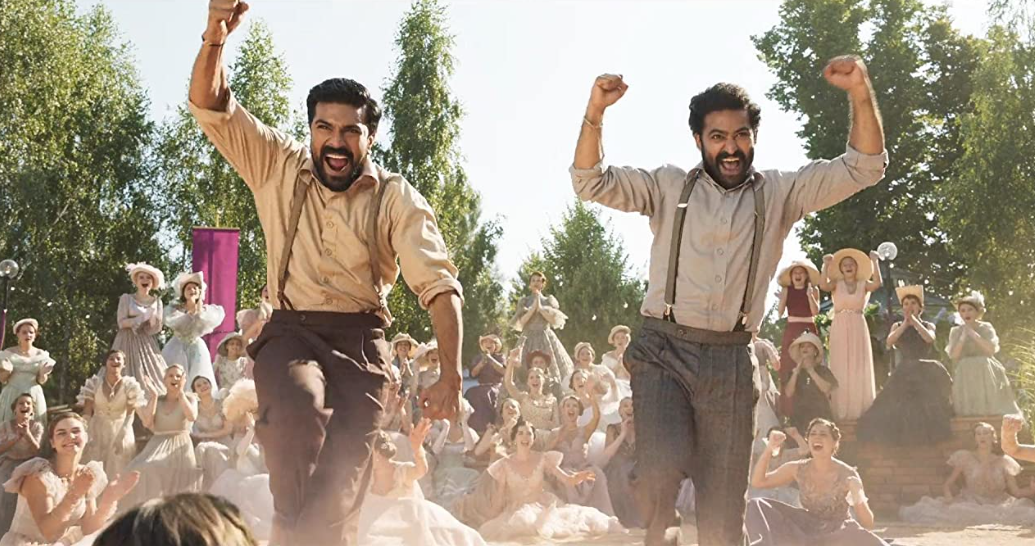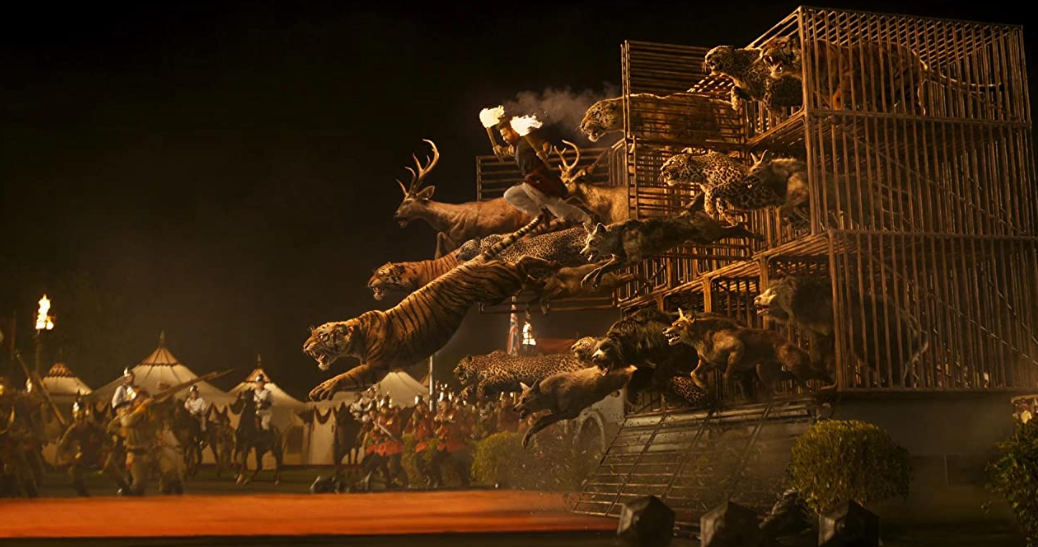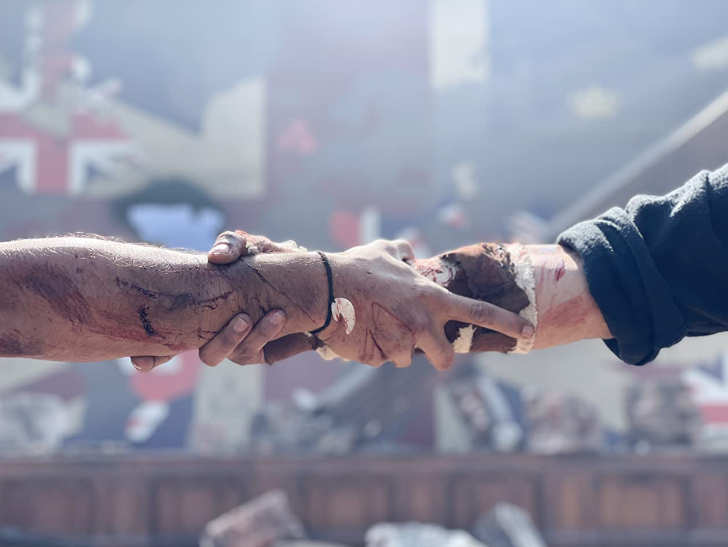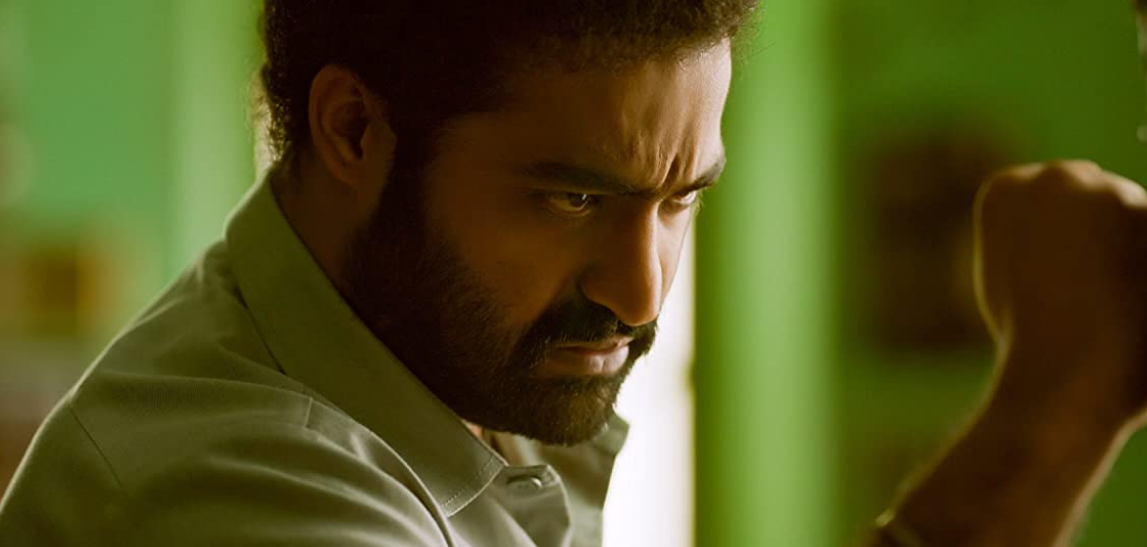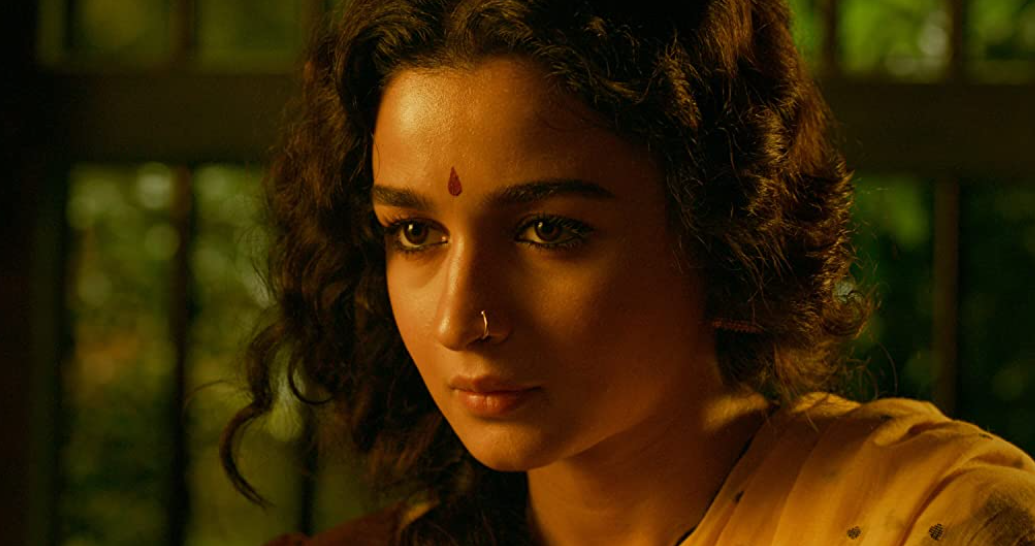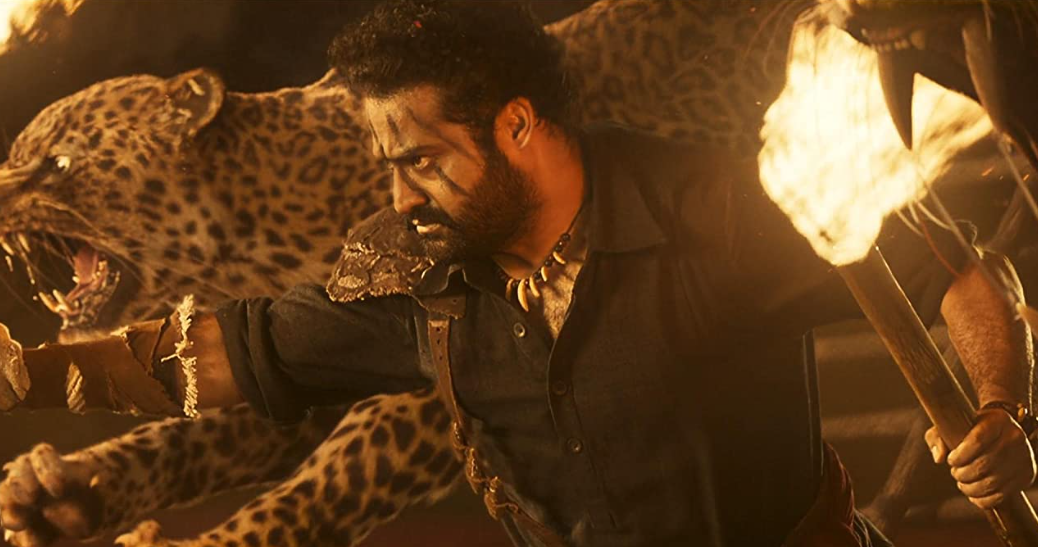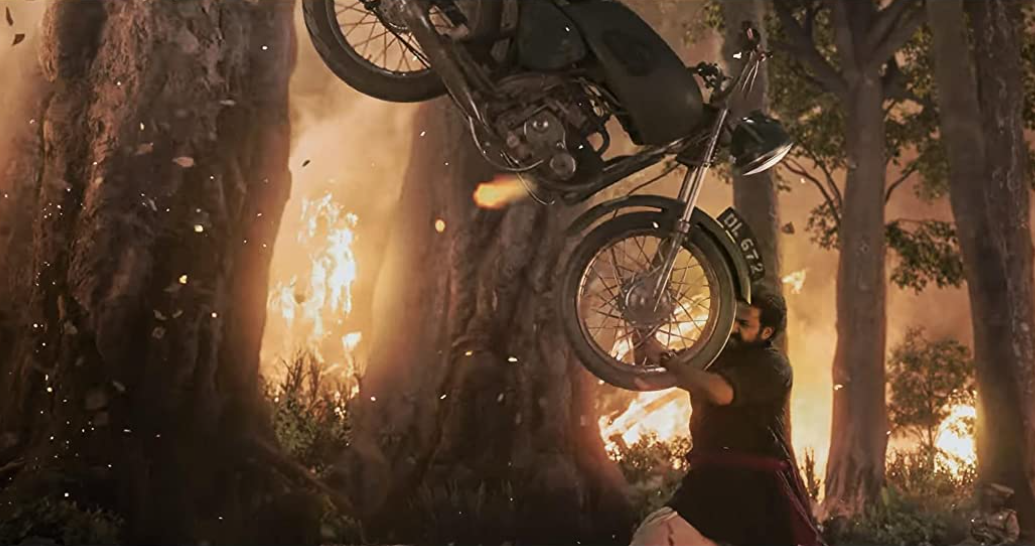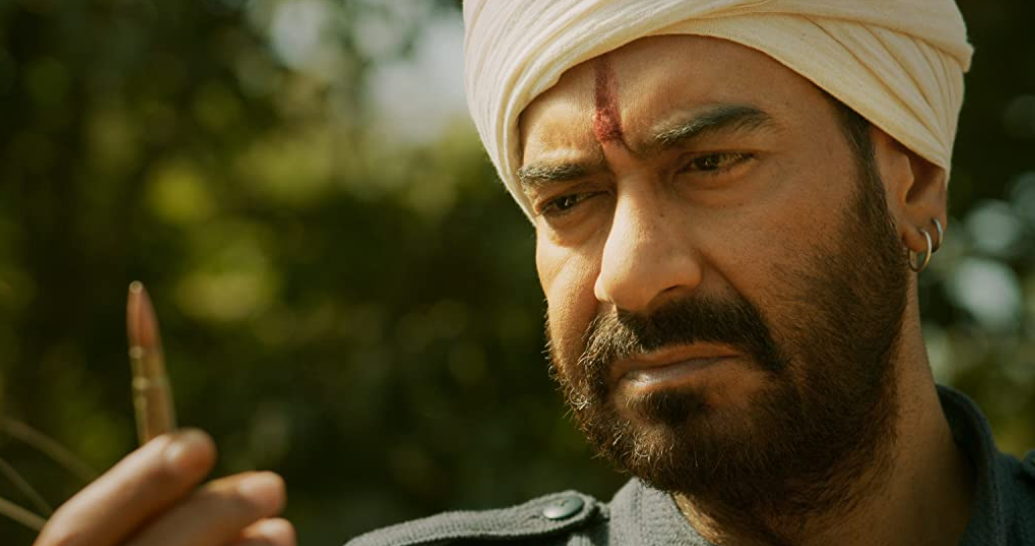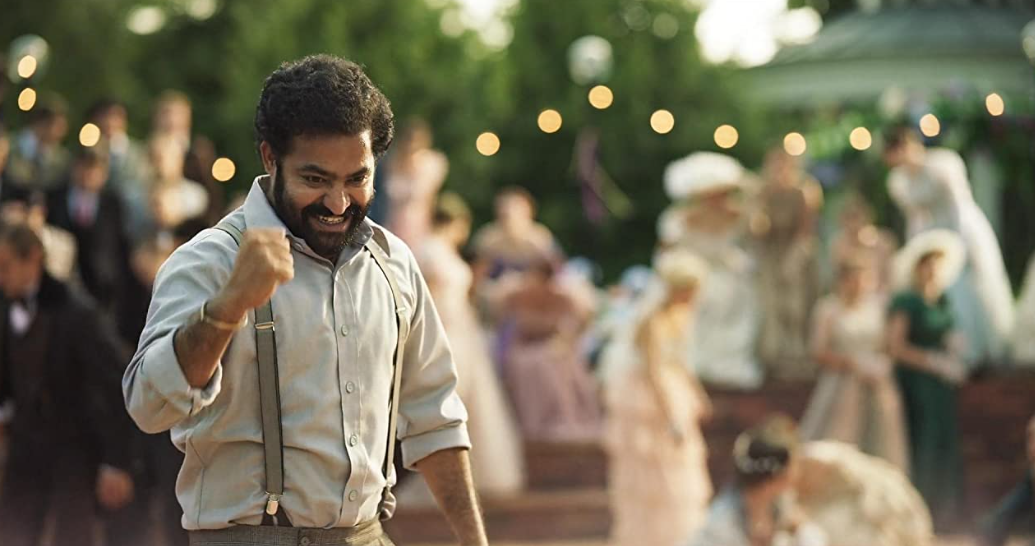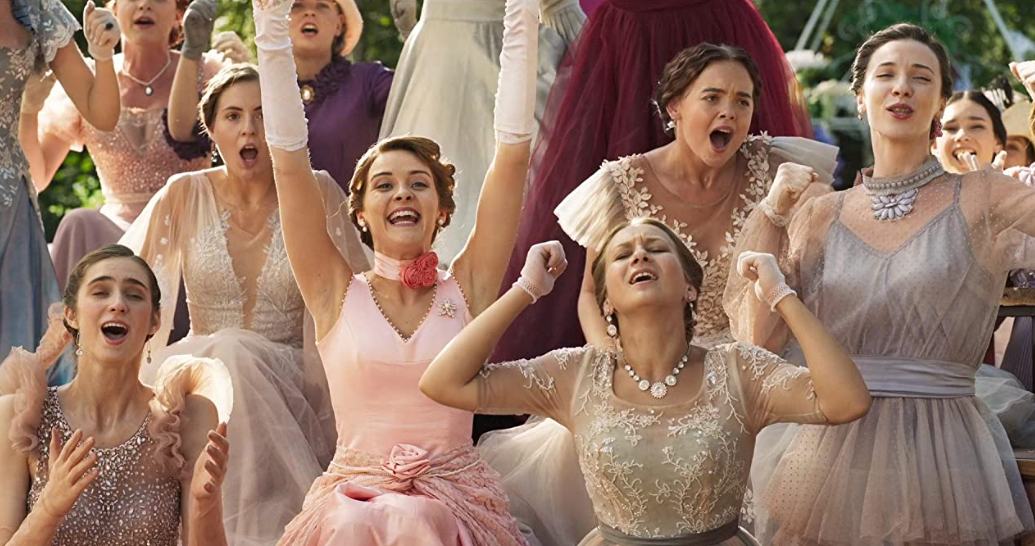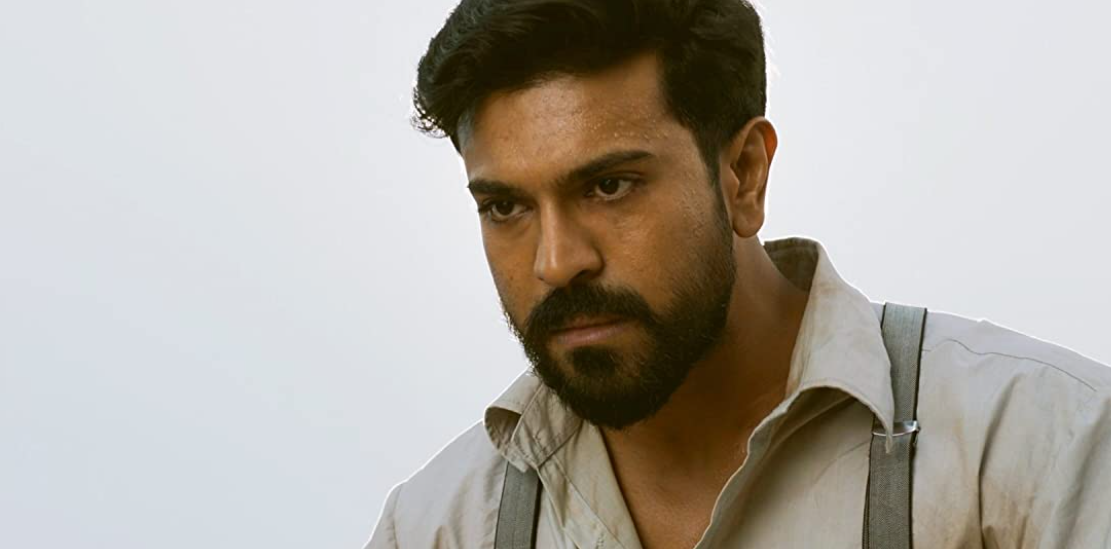MOVIE REVIEW: RRR
RRR— 5 STARS
Deep down, all movies are passion projects for the people that make them. Sometimes, it is difficult to see that passion come through fully in the finished film. Uninspired moments, pretentious indulgences, shortcuts of effort, or even the limits of ambition will dilute the fervor of how the given movie came to exist. To that end, the rarer feat is a film that never, even for a second, loses or runs out of its passion. S.S. Rajamouli’s RRR is one of those special movies.
LESSON #1: PASSION PROJECTS WITH PASSION– Not a single minute of RRR’s whopping 182 minutes feels like a wasted effort. Employing vibrant creativity to add shine to the legend of two important revolutionary figures from his own country, S.S. Rajamouli packed every emotional and artistic fiber he could into the most expensive Indian movie to date. The filmmaker’s goal was to move his audience. My, oh my, does RRR ever do that and then some.
RRR is essentially fan-fiction. Inspired by the imagined and revisionist histories of The Motorcycle Diaries and Inglourious Basterds, Rajamouli saw similar pillars in two historical Indian heroes, Alluri Sitarama Raju and Komaram Bheem, who fought against the ruling parties of the British Raj and the Nizam of Hyderabad. RRR imagines if the two men would have met in the 1920s and struck up a friendship in anonymity before waging their wars for independence.
When the cruel British governor Scott Buxton (Punisher: War Zone star Ray Stevenson) and his dreadful wife Catherine (Alison Doody of Indiana Jones and the Last Crusade) abduct a little girl named Malli (Twinkle Sharma) to be their henna-painting songbird slave, the incensed Gond village sets a plan in motion for her rescue. Taking it upon himself to infiltrate the British estate is the guardian shepherd Komoram Bheem (N.T. Rama Rao, Jr. of Aravinda Sametha). Introduced shirtless trapping a powerful tiger in the Adilabad Forest (an animal you’ll meet again later in surprising fashion), Bheem poses as a Muslim named Akthar in Delhi to enter the royal estate and romantically pines for Scott’s benevolent niece Connie (Olivia Morris of Hotel Portofino).
Meanwhile, from within the ranks of the Indian Imperial Police, there is the highly motivated young officer A. Rama Raju (Ram Charan of Ramajouli’s 2009 hit Magadheera). Introduced beating the snot out of a massive mob of protesters to get his wanted man, Rama has been impressing his superiors with his intense diligence and brutal determination even against his own countrymen. The Buxtons task him to go undercover with the common citizens to break up the pro-independence resistance and flush out its leaders.
LESSON #2: TEAMWORK MAKES THE DREAM WORK– It’s at this point in RRR when the two emerging titans meet. With one galloping on horseback and the other speeding on a motorcycle, the two execute a thrilling rescue of a young boy trapped beneath a fiery, collapsing railroad bridge. To borrow John C. Maxwell’s often-hijacked quote, “teamwork makes the dream work” as Rama and Akhtar bond quickly and marvel at each other’s courage, prowess, and dedication. Peaking with the now-famous “Naatu Naatu” song-and-dance routine choreographer by Prem Rakshith, Rama helps Akhtar get closer to his goals of Connie and Malli.
LESSON #3: DRAMATIC IRONY IS A HELL OF A STORYTELLING TOOL– Part of the compelling brilliance of Rajamouli’s storytelling in RRR is its layering of dramatic irony. We, the audience, are granted deep introductions into these two leads and their respective secret missions. We anticipate how Bheem and Raju’s competing agendas would clash and explode if the two brothers-in-arms-and-dance realize they are pursuing each other. When that moment comes, it’s a crusher and creates an embattled pinnacle point in the movie.
Not to be undone and with drama in reserve, Rajamouli takes the second half and reloads the dramatic irony even further after that split. An extended flashback sheds light on Rama Raju’s tragic origin through the heroism of his father (Indian film legend Ajay Devgn), mother (Shriya Saran of The Other End of the Line), and uncle (Visaranai’s Samuthirakani). It also reveals his long-lost fiance Sita (Alia Bhatt of Brahmastra: Part One - Shiva) and her chance intersection with Komaram Bheem on the lam still trying to free Malli.
LESSON #4: THE SPIRIT OF FRIENDSHIP– Through it all in RRR, the spirit of friendship becomes the radiating fuel of the patriotic fervor that comes together between these two heroes and their vital arcs. These men have come too far, even as eventual rivals, not to have their fates connected by fortitude and mutual respect. The film’s title initials define the combination of “rise,” “roar,” and “revolt.” By golly, in raising its fists, its voices, the wind, and virtually every element it can tame, all three of those title traits come out in high volume and gobsmacking brightness.
LESSON #5: PROMISES TO YOUR PEOPLE– If friendship and patriotism are the fuel, then promises are the molten core of RRR’s furnace of passion. Every selfless act, every motive against altruism, and every grasp for freedom comes from characters with complete commitment to larger causes. Between reuniting families, seeing lovers again, avenging losses, and the goal of giving everyone a weapon against tyranny, promises have been made to one’s people that these men would risk their lives to keep.
To call the cast and crew of RRR multi-talented would be a gross understatement. This grand saga demanded a full range of performance requirements from N.T. Rama Rao Jr. and Ram Charan. From physical comedy and fight training to dance choreography and vocal numbers, these two f’n studs conquered every cardio-challenging task with flying colors. You will most certainly swoon for these men, and they deserve to be treated as absolute stars.
The talent behind the camera is even greater. The extra element of music lifts Rao Jr., Charan, and the totality of RRR to another plane of impact. Composer and lyricist M.M. Keeravani (the director’s award-winning cousin) infuses the film with a moving score and seven original songs. The booming instruments heighten the film’s adventure and intrigue. Their magnificent words stir hearts. Put them together amid the stunts directed by coordinator Nick Powell and people will cheer and dance in the theater aisles and on their couches at home.
Squeezing every cinematic rupee and crore from a record budget (estimated to be about $72 million), S.S. Rajamouli assembled this massive pageant himself with cinematographer K.K. Senthil Kumar (the Baahubali series), prolific editor A. Sreekar Prasad, and an army of craftsmen and extras, and did so without employing second or third unit filming teams. That’s nearly incomprehensible in this hemisphere of the film industry. Using every trick in the book and in-house visual artists, you will marvel that, short of a horse or two, no wild animals of any kind were used in this movie. It’s all CGI and, while the gleam of it all may be obvious, the effect is not weakened an ounce and often puts Hollywood blockbusters costing double this budget to shame.
In several interviews, Rajamouli considers storytelling to be his foremost job as a filmmaker. He values emotional responses and achieves that with every fabricated bucket of blood, sweat, and tears in RRR. His inventive vision for extravaganza knows no bounds. You would be hard-pressed to find a more rousing and rollicking movie experience this year or many others. Again and again, this is something truly passionate and special.
LOGO DESIGNED BY MEENTS ILLUSTRATED (#1088)

